A favorite birding site near our NE Illinois home is the 175 acre Bliss Woods Forest Preserve in Sugar Grove. A bike trail connects Bliss woods with the 402 acre Hannaford Woods-Nickels Farm Forest Preserve, forming a complex known as the Bliss Woods-Waubonsee College open space assemblage. This protects a varied habitat including hardwood forest, open prairies and wetlands. Most of this section of Illinois is flat land, planted in miles and miles of corn and soybeans, but thanks to preservation of the remnants of the Kaneville Esker, this preserve is a green gem, with rolling hills and valleys. Ridges (eskers) and prominent mounds (kames) interrupt the monotony of the prairie. These features, as well as prairie potholes (also known as kettles), were produced about 13,000 years ago by retreating glaciers. Many have been disturbed or removed, as they are a convenient source of gravel.
Blackberry Creek as it courses through Bliss Woods:
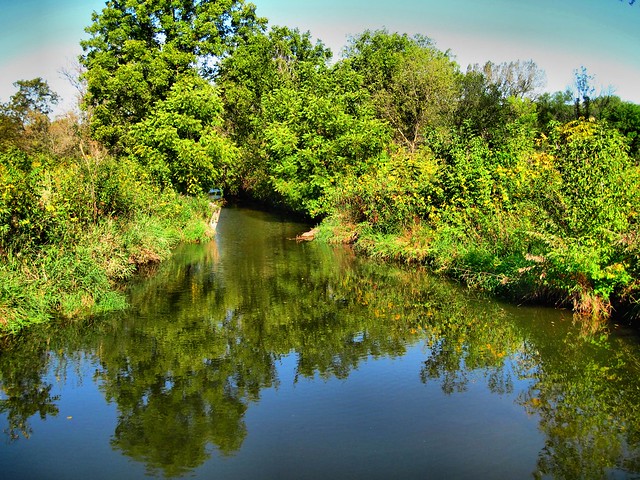
Woodland path in Hannford Woods:
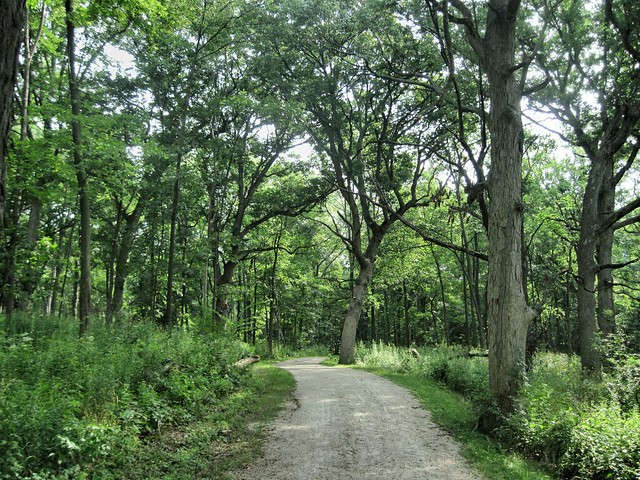
This barn, surrounded by a white rail fence, is on private property just across from the entrance to Hannaford Woods:
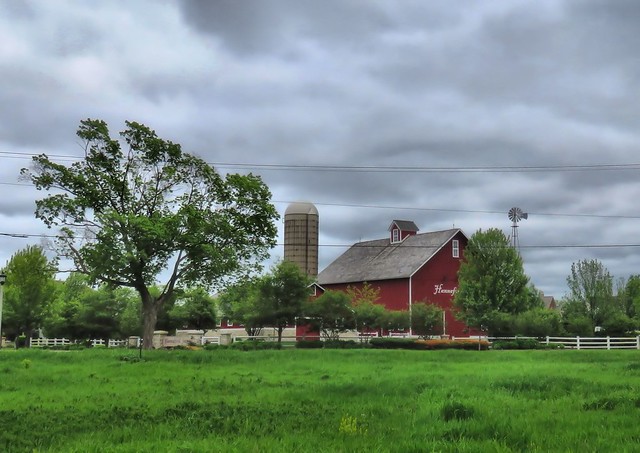
We visited the preserves several times before returning to Florida on May 24. On the first visit to Bliss Woods we obtained only distant views of a Scarlet Tanager, one of our favorite birds. Two days before returning to Florida we tried one last time. The morning started out windy and quite chilly at 46 degrees F (7.8 degrees Celsius). The tree limbs were moving so much that we held little hope of seeing many birds at all. Some of those which took flight actually flew backwards!
A male Northern Flicker was not affected by the wind as he searched for ants on the mowed lawn in the picnic area:
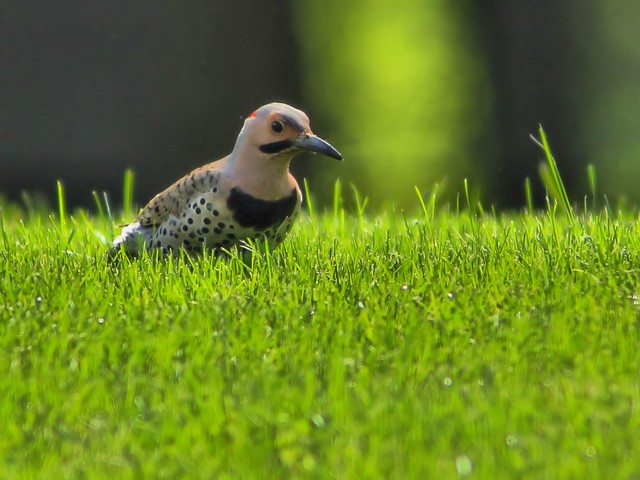
The winds subsided and the skies brightened, though the temperature dropped a couple of degrees. Yellow Warblers were already gathering nesting materials. This one sang in a small tree on its territory:
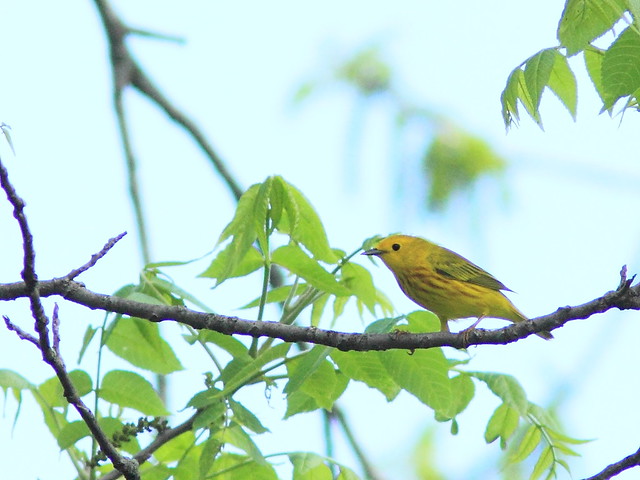
American Goldfinches bounded about, carefree, as they will not breed until later in the season:
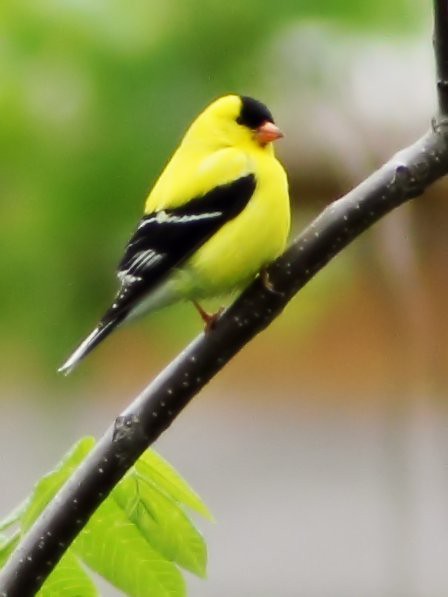
Indigo Buntings had arrived en masse:
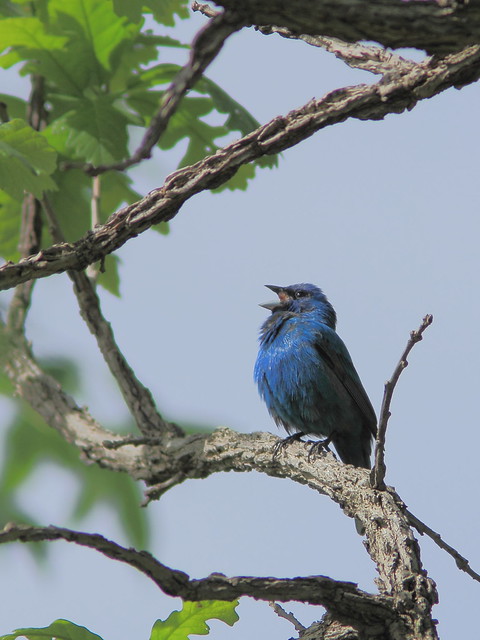
A White-breasted Nuthatch seemed to be exploring a nest hole. It kept poking its head in but never entered. I wondered if it might be occupied by another creature such as a squirrel or chipmunk:
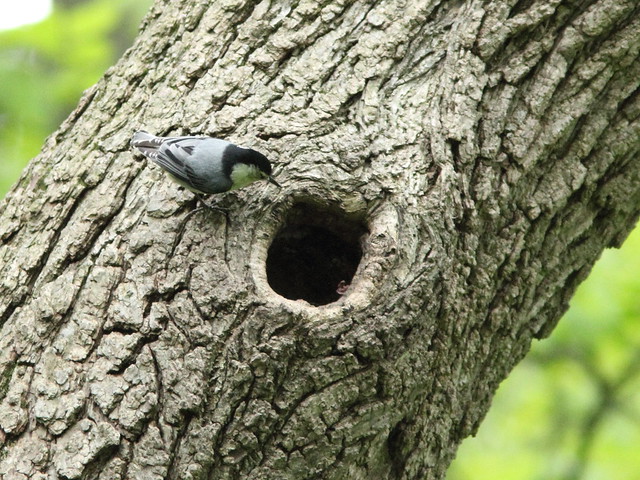
High in a nearby oak tree, I spotted a White-breasted Nuthatch fledgling:
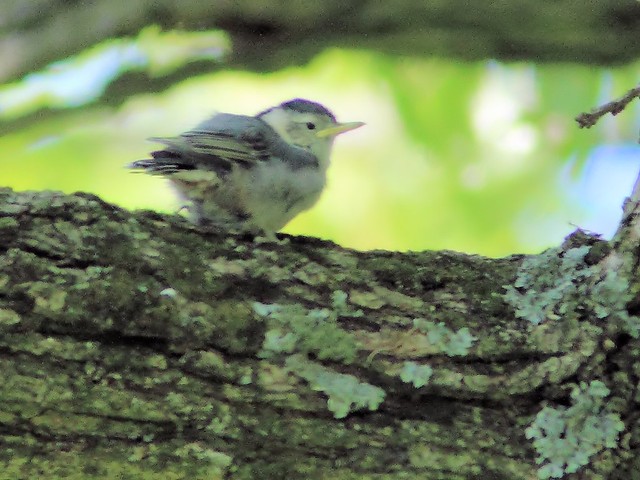
As a parent approached with a grub, it started begging silently:
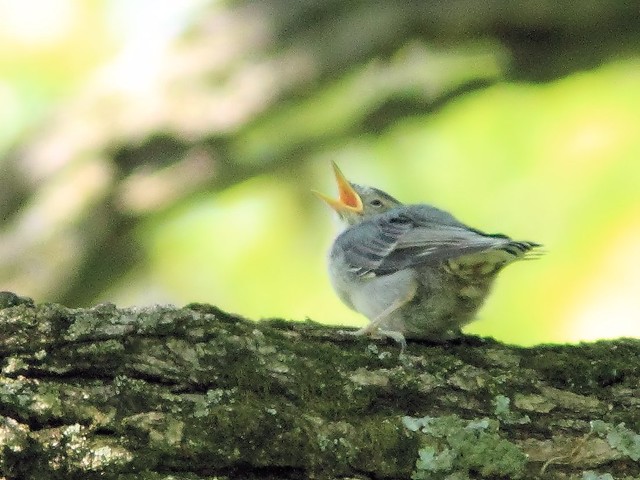
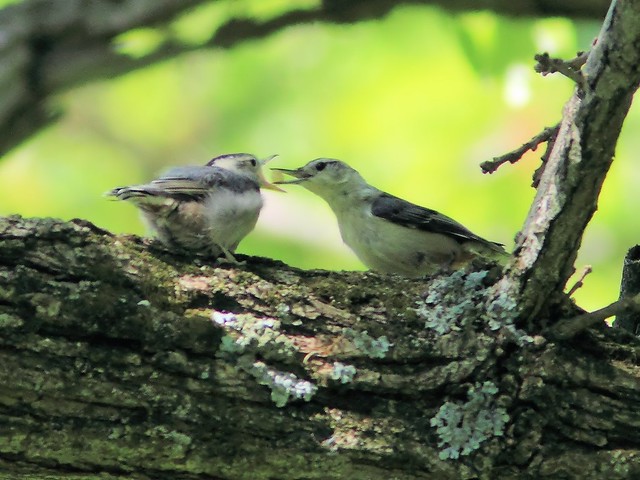
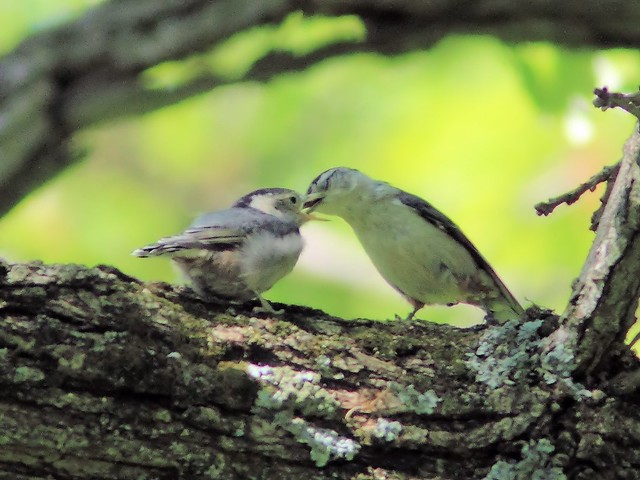
"I still want more!"
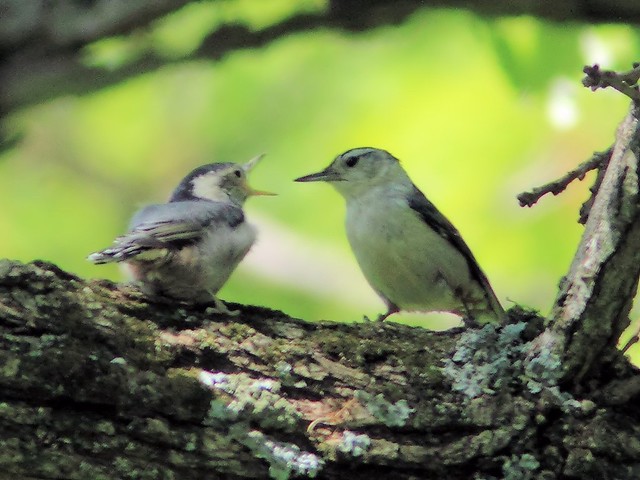
This first year male Orchard Oriole was the second we saw this week:
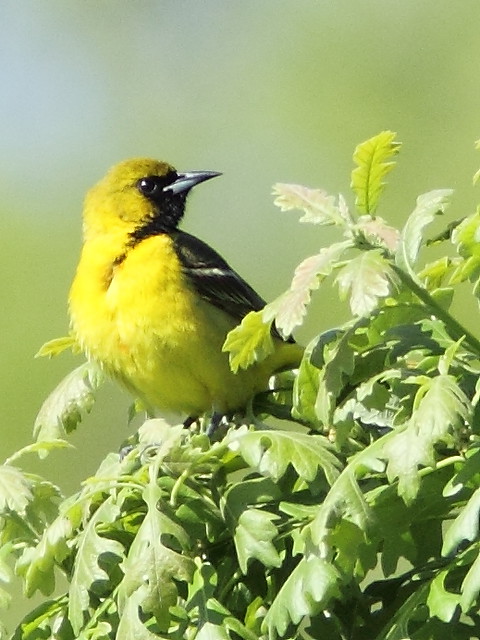
A male Orchard Oriole in full breeding plumage flew by but I was unable to get a photo, so here is one from May 14 a year ago. It is smaller than a Baltimore Oriole and has brick-red plumage rather than bright orange of the latter species:
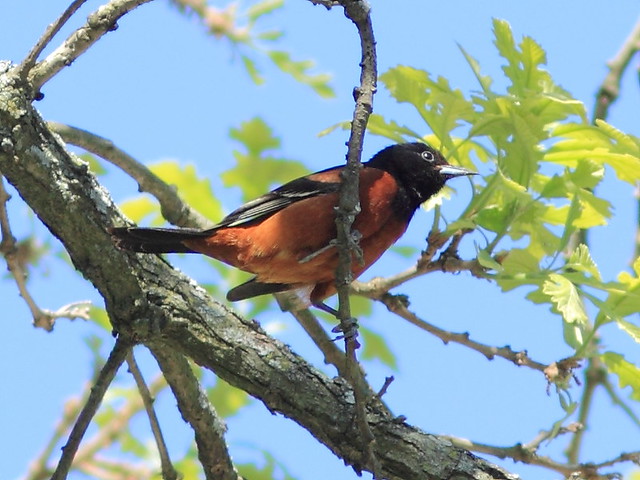
A Red-tailed Hawk swooped in low. Not a threat to small birds, it was probably hoping to surprise a rabbit or squirrel:
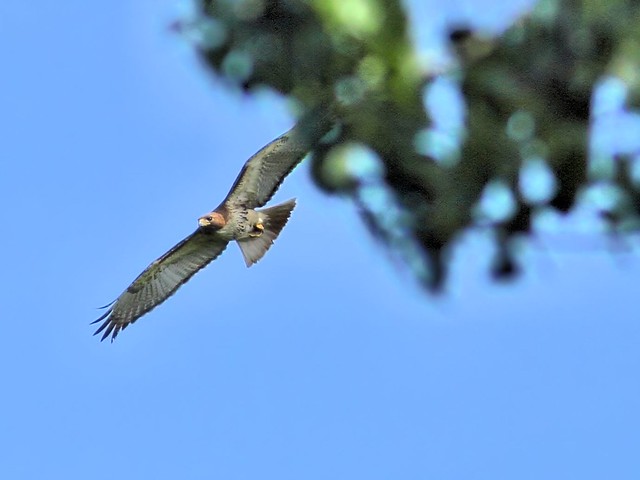
We have been watching a pair of Blue-gray Gnatcatcher build a nest which straddles a low-hanging limb of an old oak. Now the bird is sitting tight, surely incubating its eggs. We were pleasantly surprised to see that the fragile-looking nest had not been disrupted by the high winds and rain:
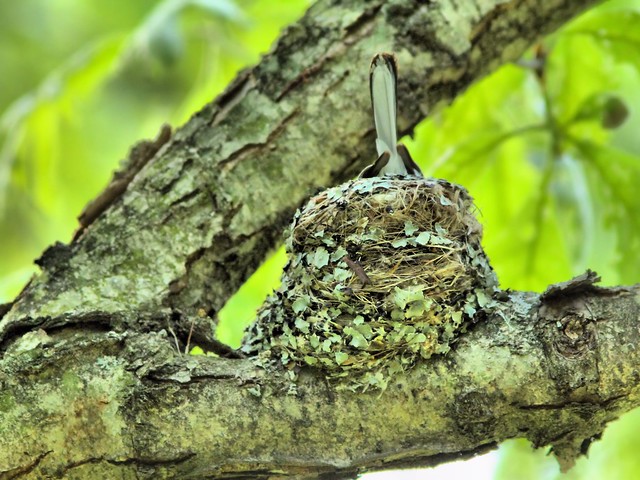
Finally, we were rewarded when a male Scarlet Tanager suddenly flew into full sun in a tree just above the trail:
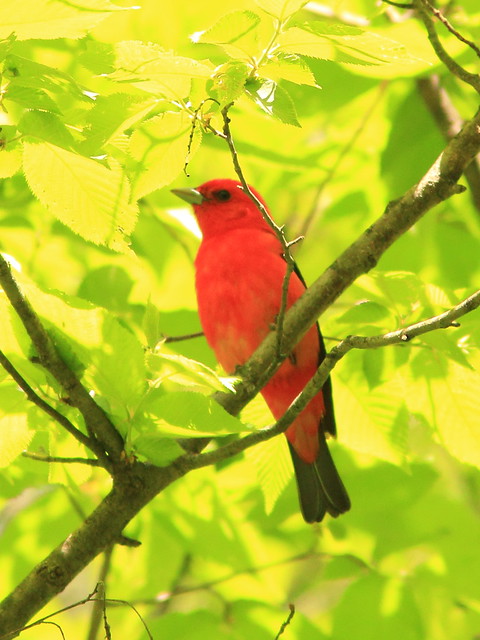
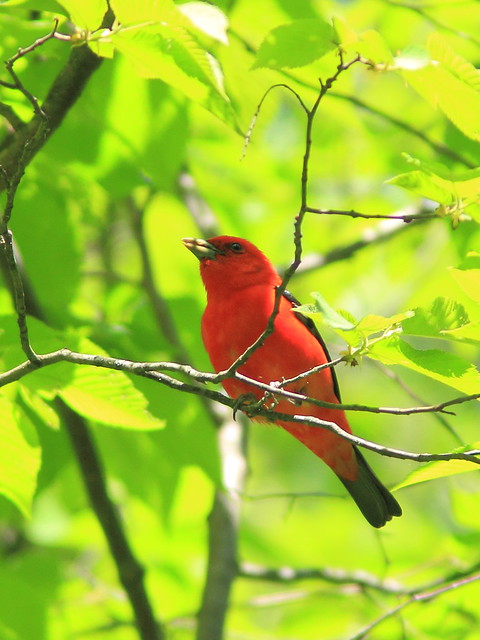
His coat is deeply scarlet except for black wings and tail. The sun was high and the leaves cast strong dappled shadows. Nearly all of my dozen photos were spoiled because of the sharp contrasting patches of light. This one better illustrates the problem, as the red color (and the green on the leaves) is washed out in the highlights:
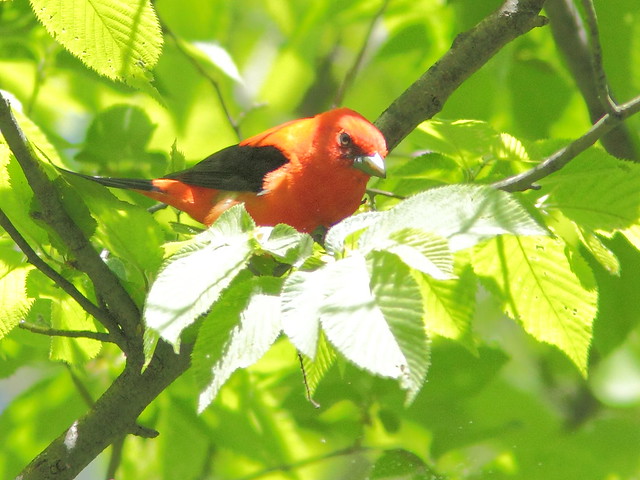
Speaking of highlights, my final visit to Hannaford Woods produced a Life Bird! This does not happen very often these days, as I have lost interest in chasing after target birds. While walking the trail I heard a very loud warbler song coming from close to the ground nearby. I simply could not identify the song and tried to find the bird for the better part of half an hour. The understory was so dense and it was so tantalizingly close by!
Before continuing down the trail, I recorded the song on my iPhone, hoping to research it and identify the singer. On the way back I replayed the song and the bird responded immediately. I caught a glimpse of it, singing a few inches off the ground. It had a brown back and a distinct eye ring, but it flew off in less than a second. It continued to sing in the distance, but to my surprise a second bird appeared and sat still long enough for me to capture a 25 second burst of images before it flew off. My photos confirmed that it was a Connecticut Warbler, the first I had ever seen, and the first County record this spring.
This seclusive but not rare warbler breeds in the far north Central US and central Canada. Despite its name it is rarely found in the NE United States, and then only in the fall. The few winter records are from South and Central America.
Connecticut Warbler (May 19, 2015):
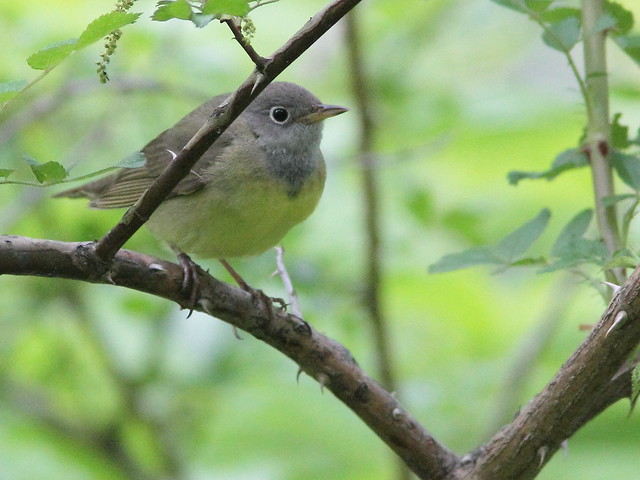
Another "first" occurred early in our stay. I was looking for a Sora in Jones Meadow Park, a small wetlands near our home. Sure enough, I saw two Soras and heard one or two others:
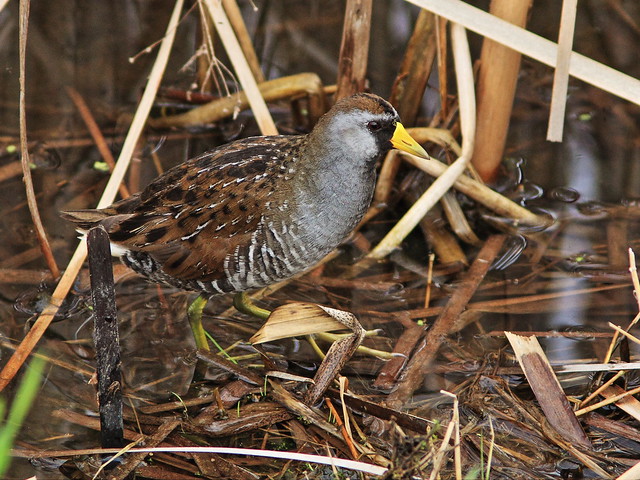
Then, a Virginia Rail started calling and suddenly strutted out at the edge of the marsh:
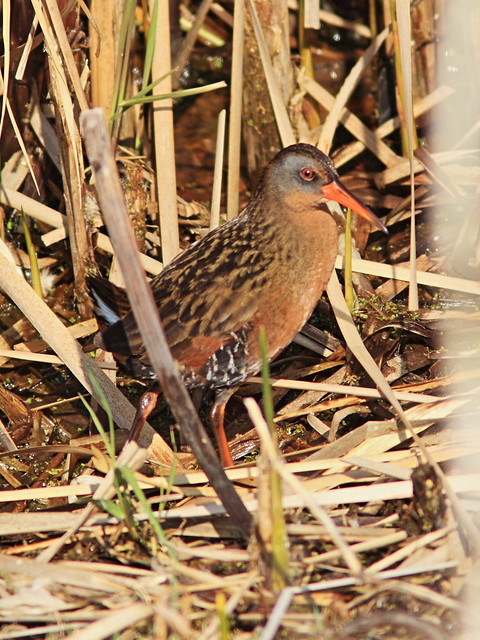
A damselfly, which I believe to be a female bluet species, allowed me a close-up shot:
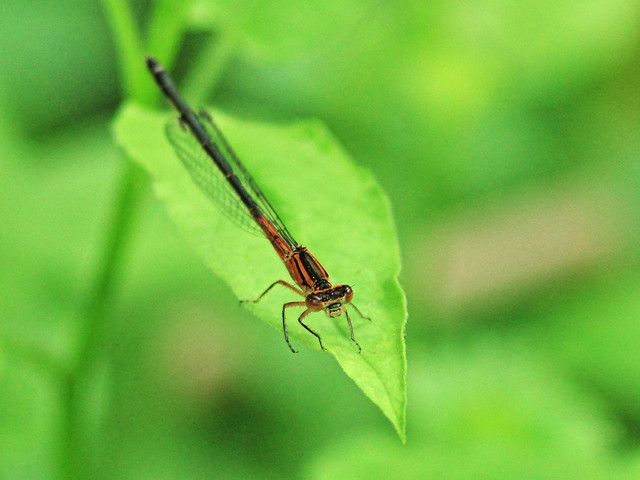 = = = = = = = = = = = = = = =
= = = = = = = = = = = = = = =
Linking to Misty's CAMERA CRITTERS,
Linking to Eileen's SATURDAY'S CRITTERS,
Linking to GOOD FENCES by Tex (Theresa).
Linking to SKYWATCH FRIDAY by Yogi, Sylvia and Sandy
Linking to WEEKEND REFLECTIONS by James
Linking to BirdD'Pot by Anni
Linking to Wild Bird Wednesday by Stewart
Linking to I Heart Macro by Laura
________________________________________________
Please visit the links to all these memes to see some excellent photos on display
________________________________________________
Here in Illinois the offspring of the local Bald Eagles have just fledged. During the next 4-6 weeks they are expected to begin following their parents on fishing and hunting forays. By the time the cold weather arrives their proficiency should have improved to the point that they will strike out on their own. Depending upon the severity of the winter, they may move southward, joined by many more of their kind from the far northern reaches of the species' range, following along the Fox River to find open water, with many congregating downstream along the Illinois River to its confluence with the Mississippi River system.
On May 18, one of the two eaglets was in the nest. It may have already fledged, but it is common for them return to the nest to be fed:
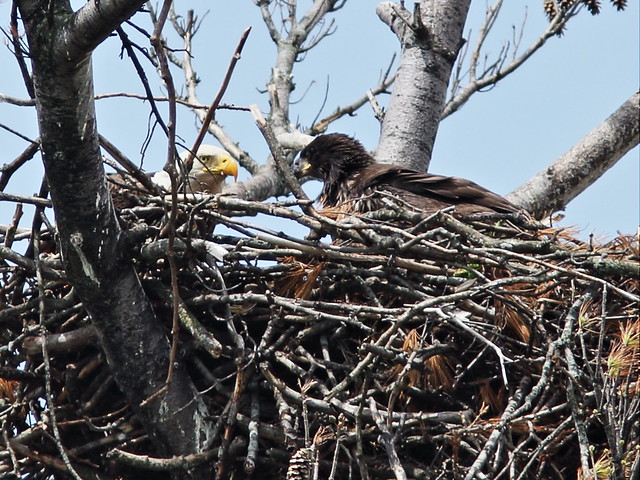
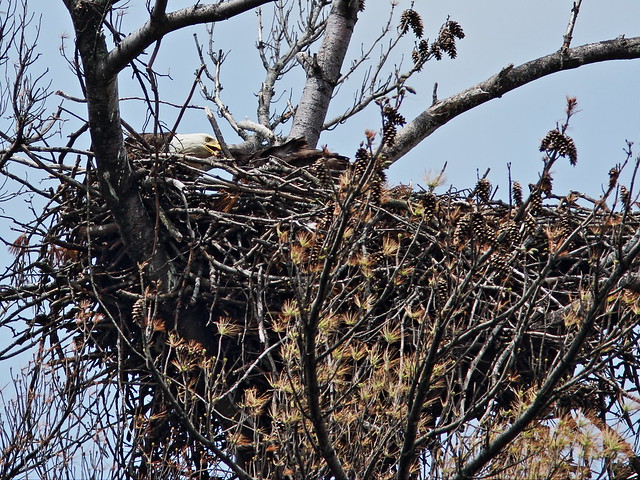
The Bald Eagles that nested near our Florida home did not breed successfully this year. If they had, their young would just now be polishing their hunting skills in preparation for a migration in the opposite direction. As temperatures increase in the waters of Florida lakes, fish seek the cooler depths. Young eagles find it easier to see and catch fish in the cooler lakes and rivers to the north. Many move up the east coast to the Carolinas and the Chesapeake Bay area, and some have been tracked into the extreme northeastern US.
You may recall that the original male of the the pair lost his mate in late October, 2014, and found a new companion in early December. Although they mated, their union did not produce any young. They seem to have bonded very well. Curiously, they both continue to work on the nest, adding and rearranging sticks. See the latest reports and photos of this behavior by Luis, a faithful eagle watcher, at THIS LINK
(Photo ©2015 LuisEagles)
We also are now heading the wrong way, flying back from Illinois to Florida, at least for a while, leaving what is left of the spring songbird migration behind us. Bad weather and lots of local travel and family events curtailed our time afield. Here are some photographic highlights of our stay in NE Illinois.
At Nelson Lake/Dick Young Marsh Forest Preserve in nearby Batavia, the grass had turned green and the trees were leafing out by the middle of May:
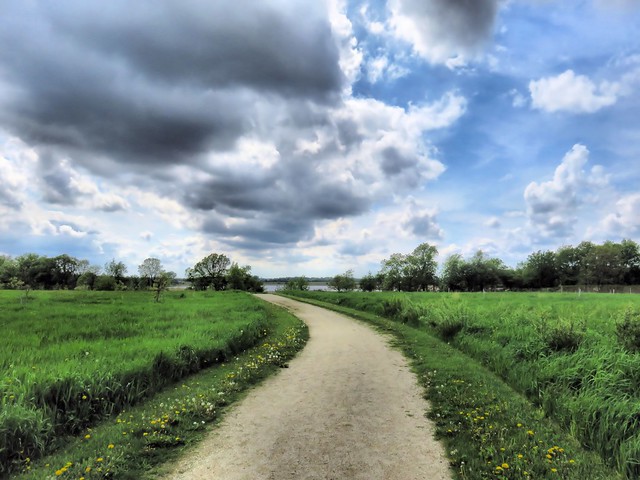
A notable sighting at Nelson Lake on May 9 was a single Bobolink, the first reported in the county this season:
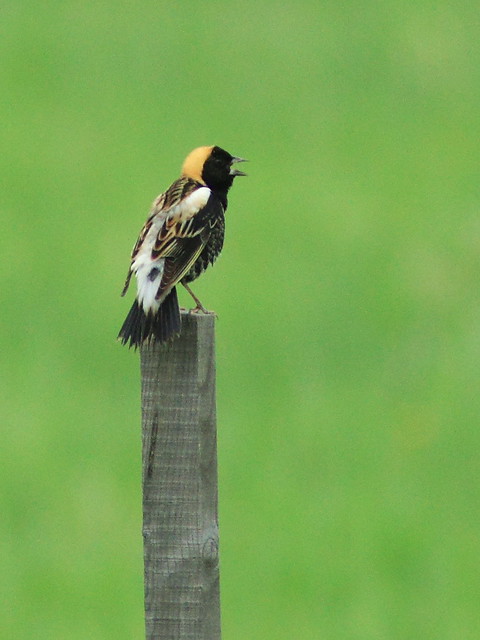
Bobolinks seem to have their plumage arranged the wrong way, as the undersides of most birds are lighter than their uppers. Posing on a fence post, the Bobolink demonstrates this feature very nicely:
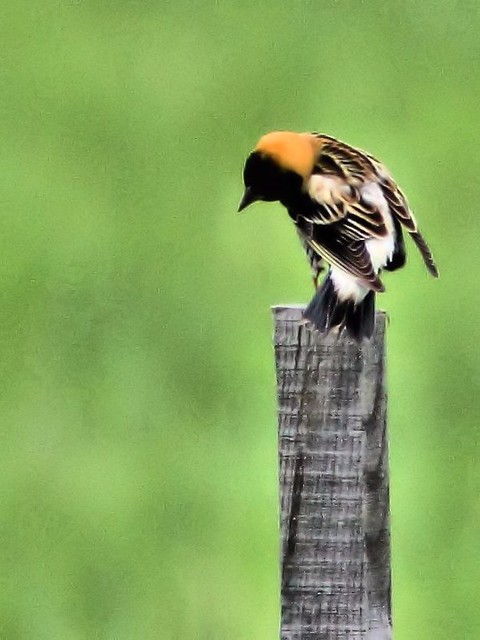
Yellow-rumped Warblers, early arrivals, were still moving through the treetops:
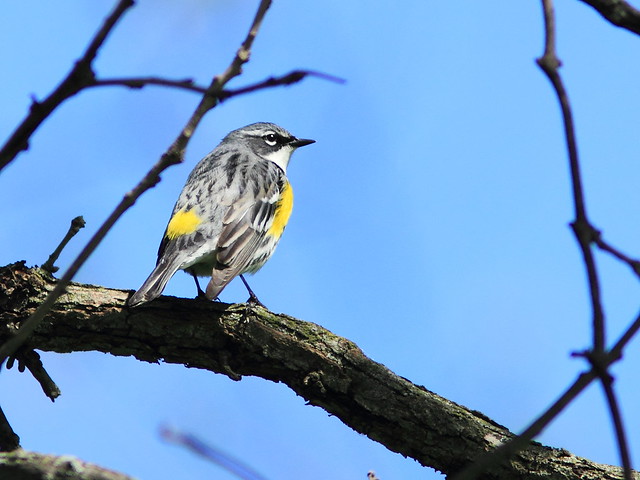
Common Yellowthroats are already staking out nesting territories on the prairie:
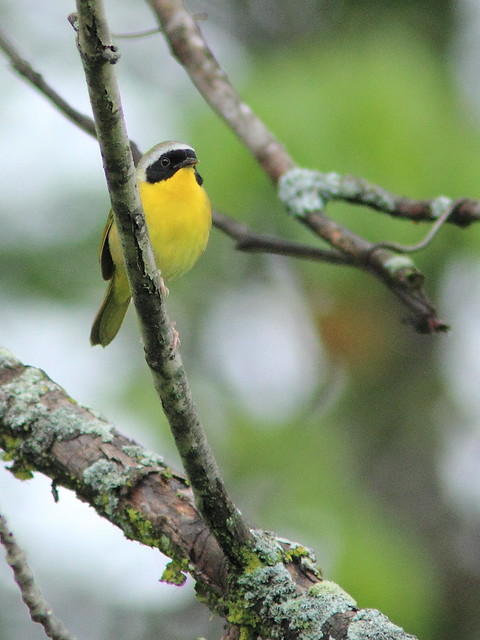
American Goldfinches, befitting their name, have molted into their brilliant breeding (alternate) plumage:
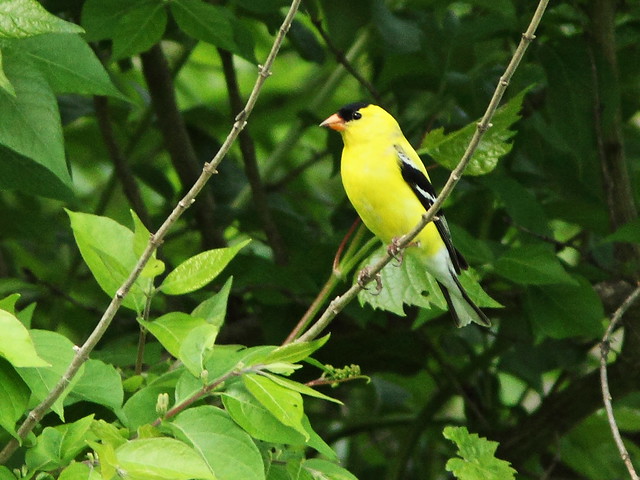
Yellow Warblers offer a more subtle but no less beautiful shade:
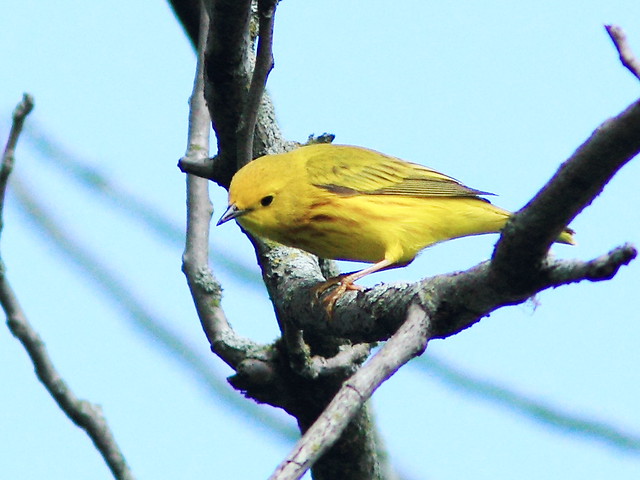
I find it easy to overdose on Yellow Warbler photos:
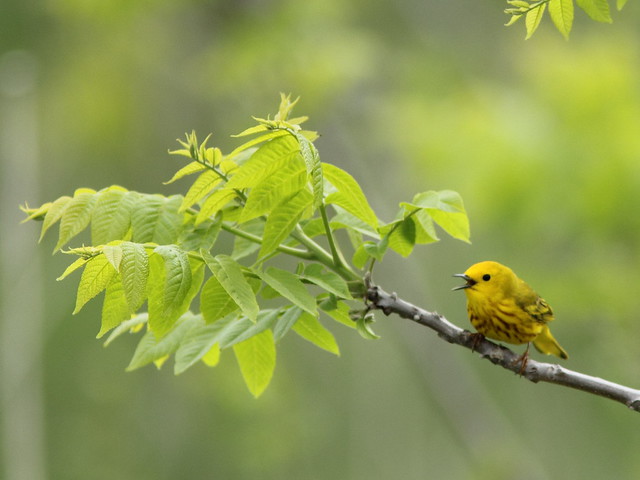
This first year male Orchard Oriole will take on a brick-red coat by next season:
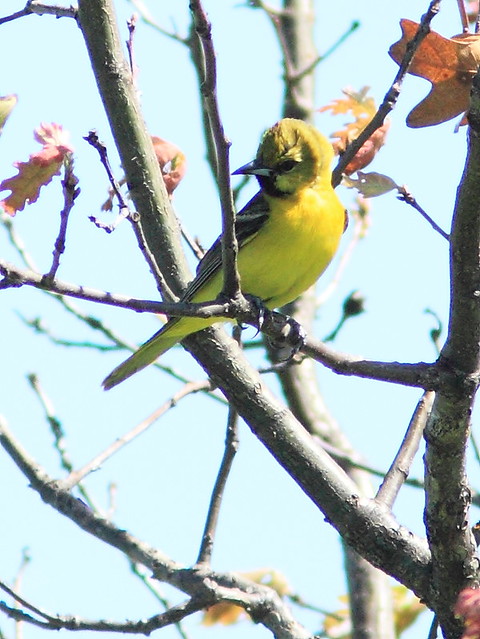
An Eastern Meadowlark sings enthusiastically:
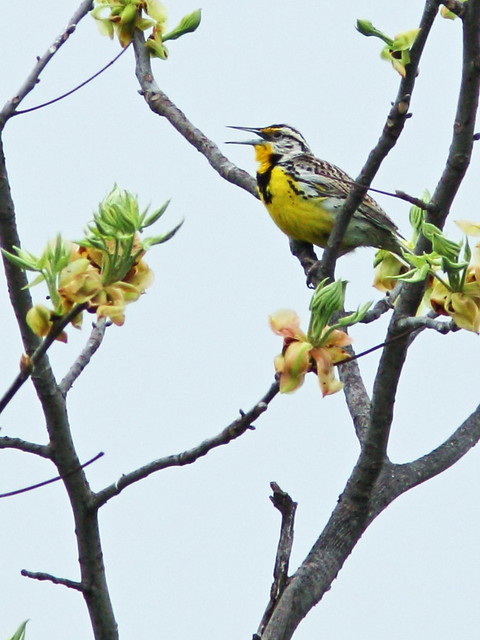
A tad of yellow highlights the brow of a Savannah Sparrow:
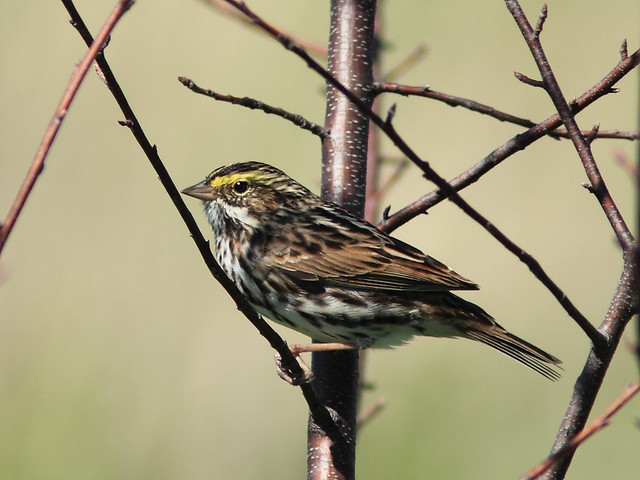
While not sporting feathers, this early Eastern Tiger Swallowtail fits the theme as it probes the dandelions for nectar:
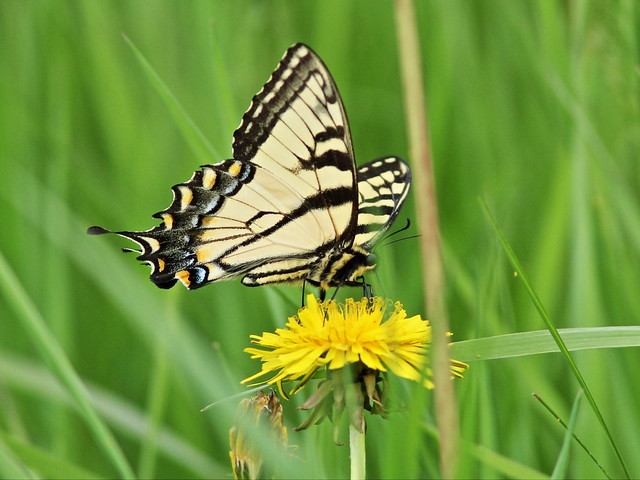
Indigo Buntings represent another primary color:
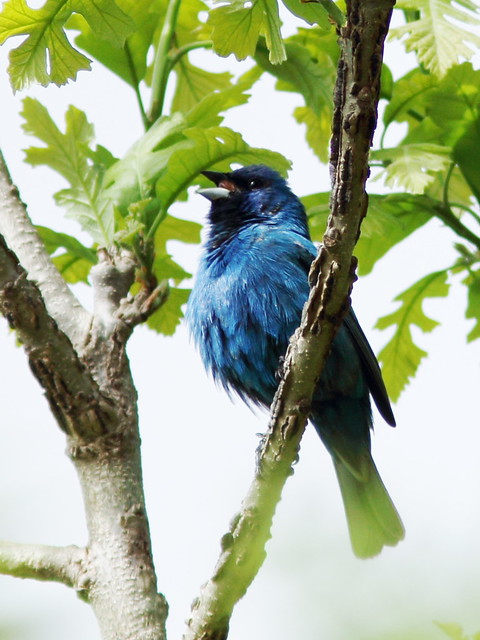
The clouds part momentarily, to allow a "blue-on-blue" portrait:
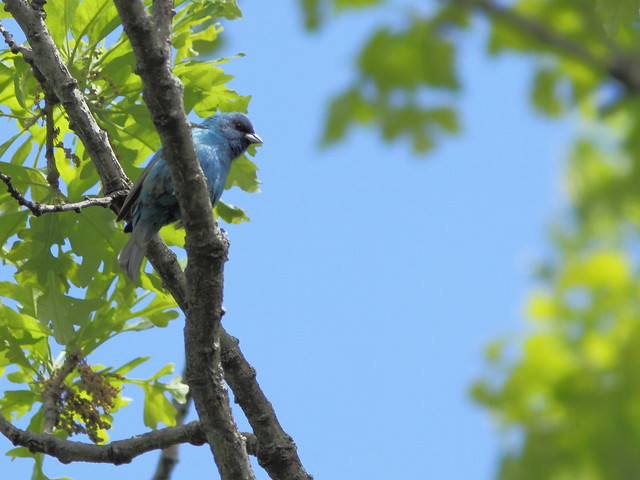
A Blue-gray Gnatcatcher incubates eggs in its expansible globular nest, fastened securely with spider webs and decorated with lichens:
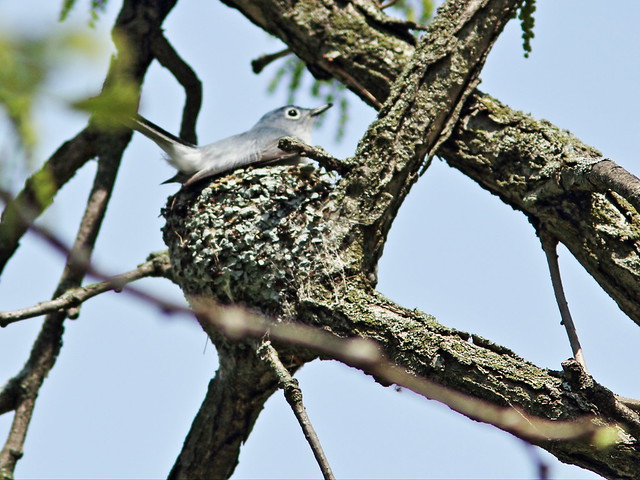
One of my most sought-after spring arrivals, a Scarlet Tanager some distance away, completes the color wheel:
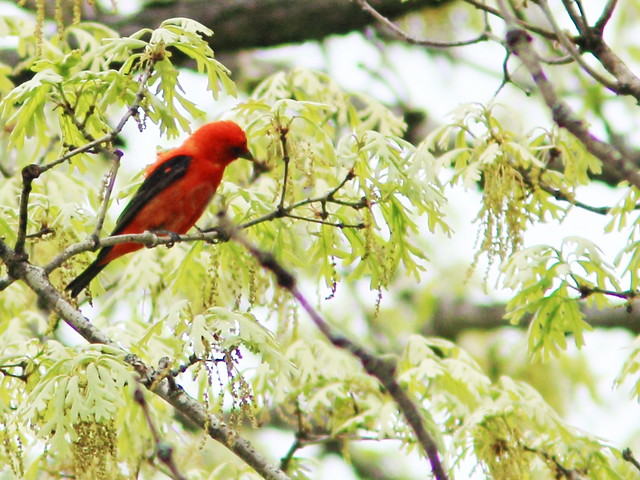
A Northern Cardinal also represents the red faction...
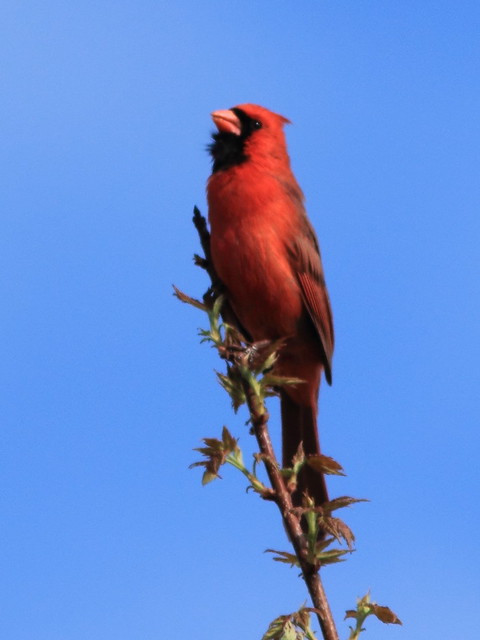
...as does a "fractionally" red Red-winged Blackbird...
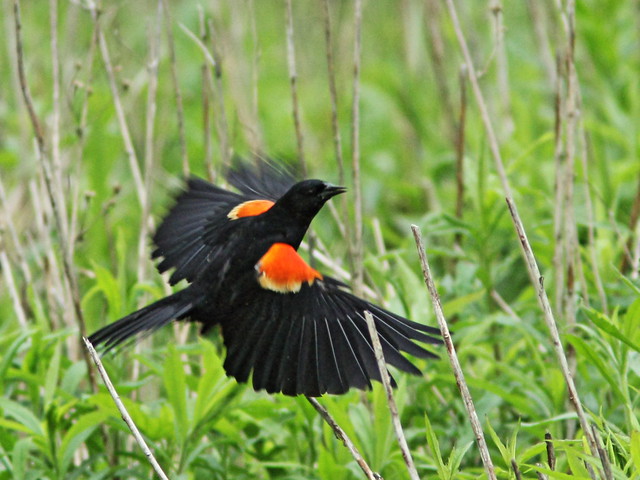
...and a Rose-breasted Grosbeak:
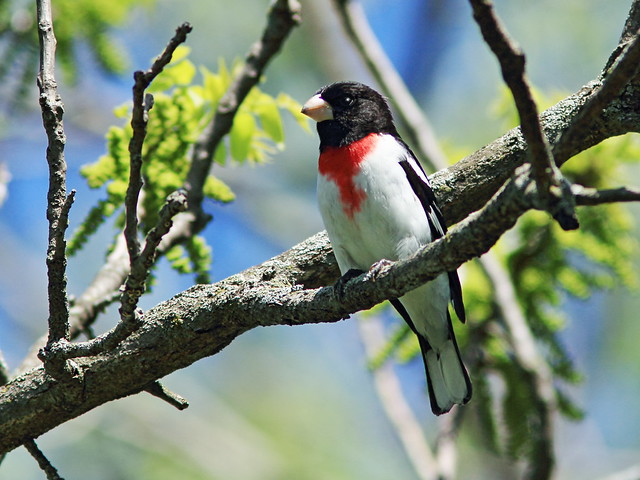
The older of our two Illinois granddaughters helps me spot orioles in the trees along the path at Hawk's Bluff Park in Batavia:
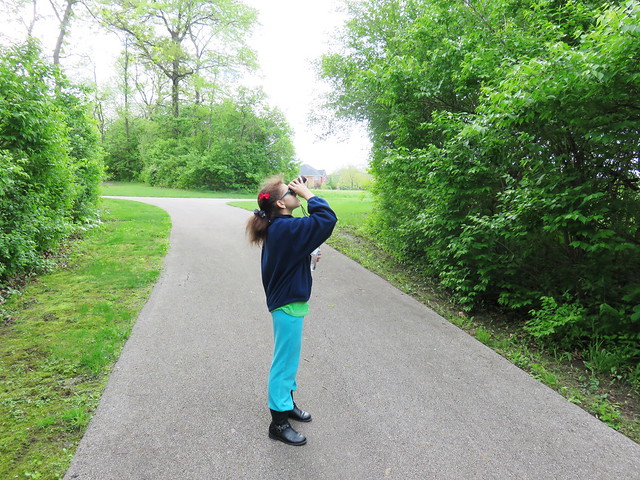
She points out a moth she found on the car window, unwittingly giving me my only image of a reflection:
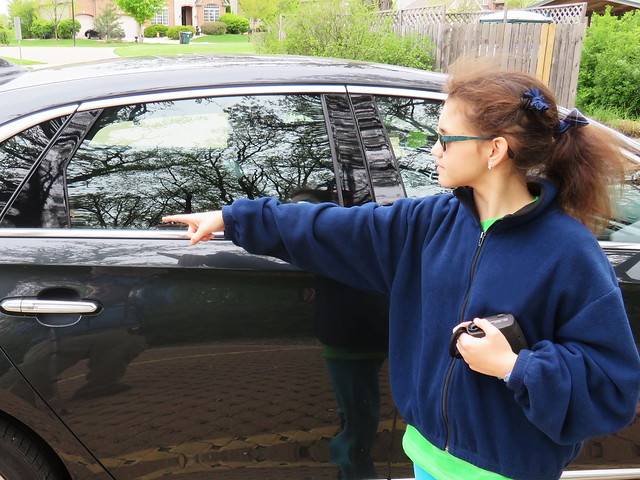
The moth is a Hydriomena species, thanks to ID by Facebook friends:
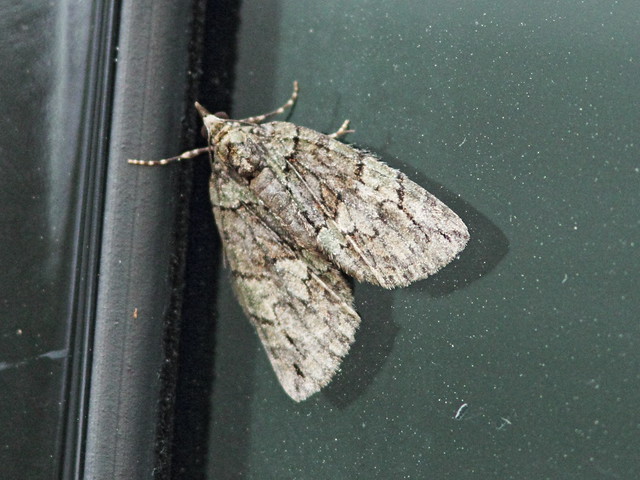
To her delight, we get good looks at several Baltimore Orioles:
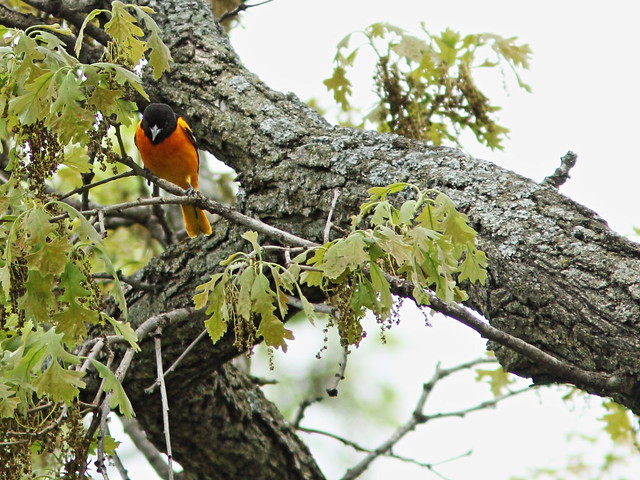
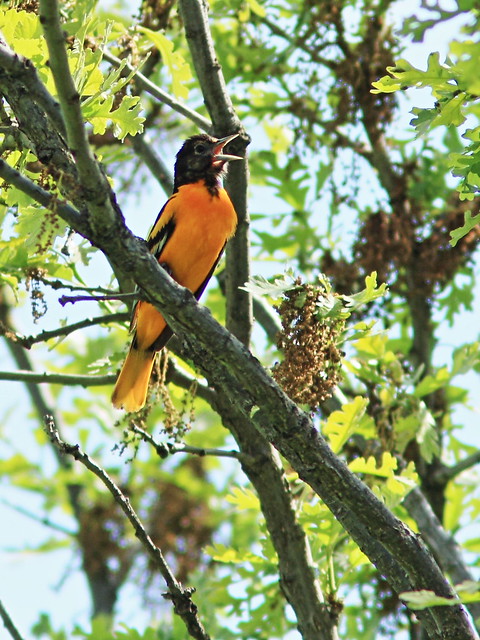
It is a bit surprising that I have not yet run out of my favorites for our Illinois stay, such as this Great Blue Heron on the shoals of the Fox River...
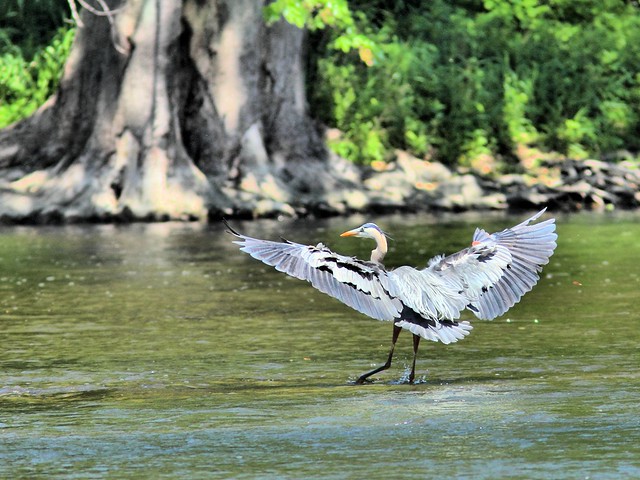
...a Swainson's Thrush...
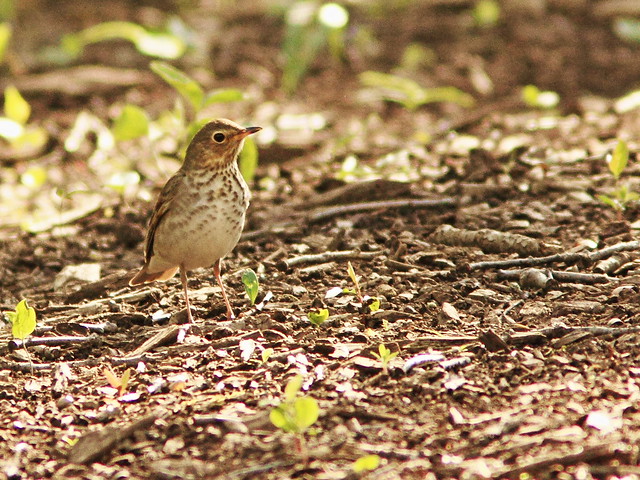
...a Six-spotted Tiger Beetle...
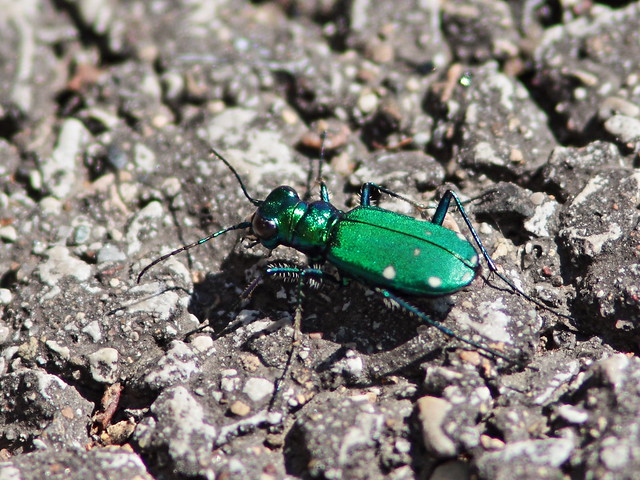
...lots of flowers, such as this Wake Robin in full bloom...
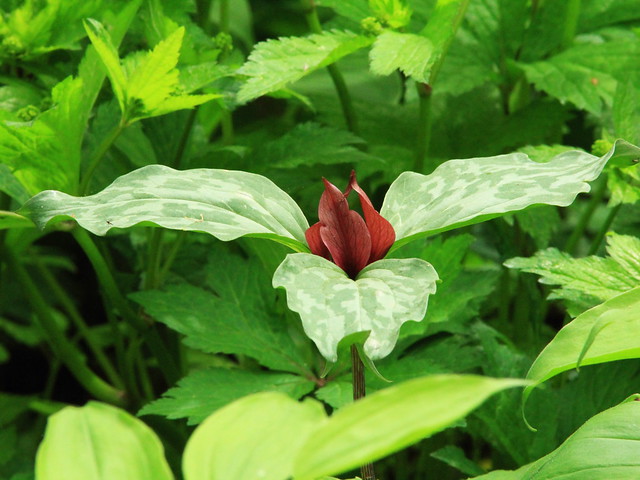
...Nodding Onion...
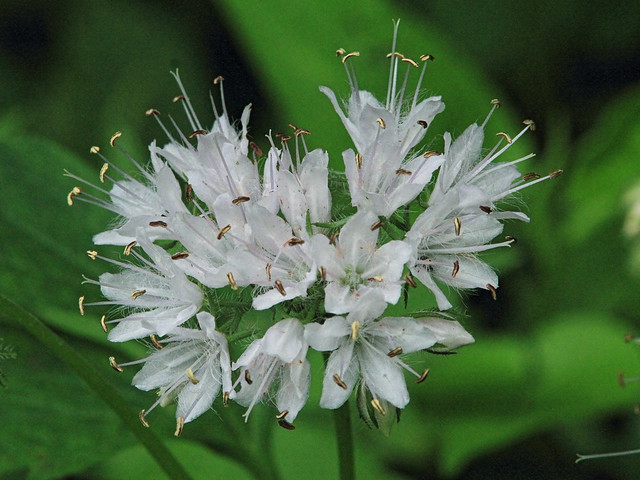
...a Dandelion seed head...
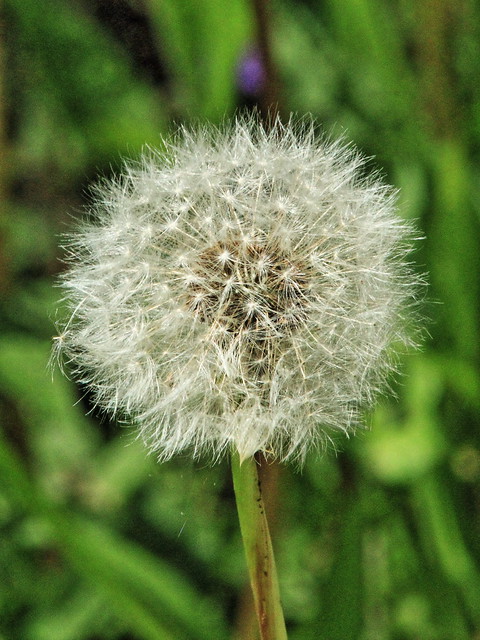
I must stop somewhere, but I want to show Tex some favorite fences, the "good," which surrounds Hickory Knolls Discovery Center and borders the road to the correctional institution...
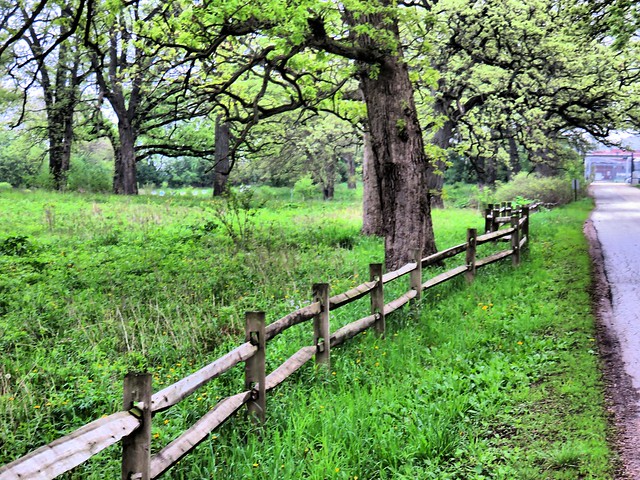
...and the "bad," for those inside:
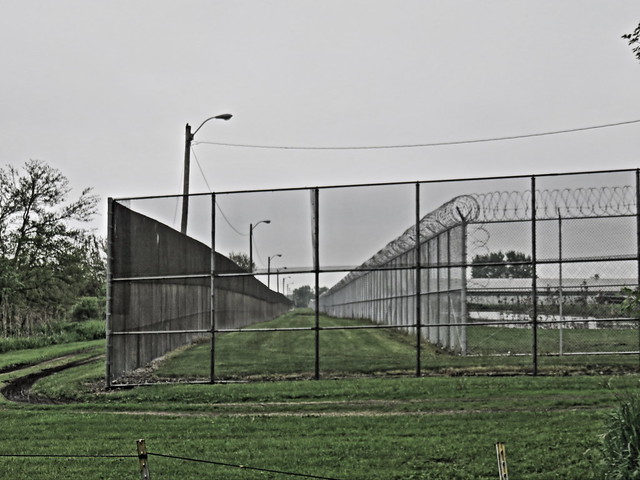
We must end on an exuberant and happy note, to celebrate the birds...
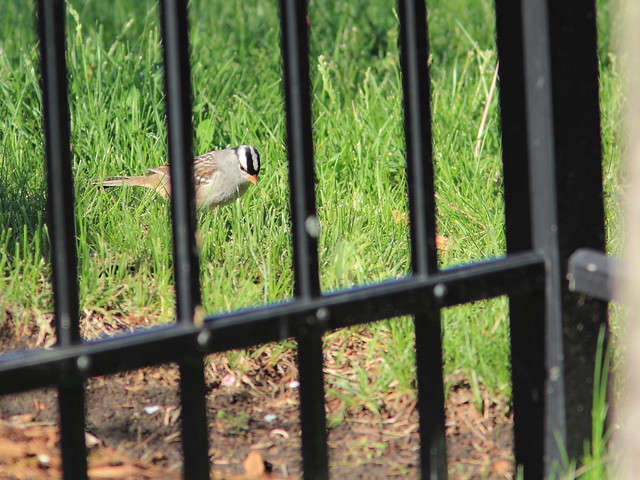
...the bees...
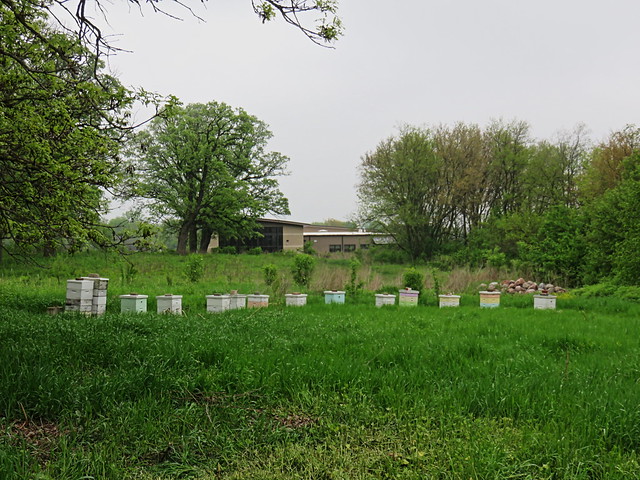
...the bridges...
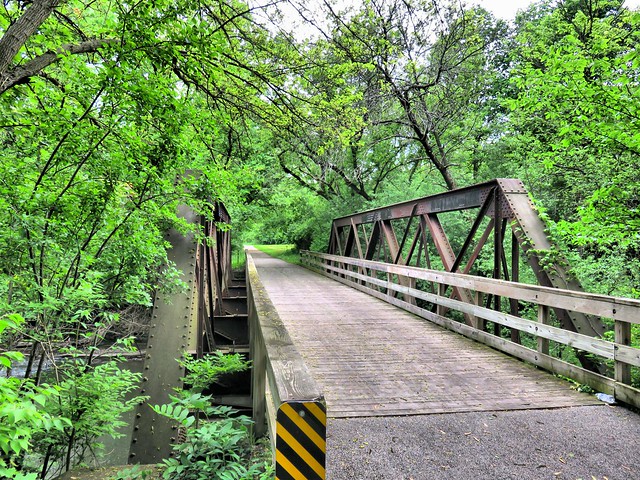
...and the brooks...
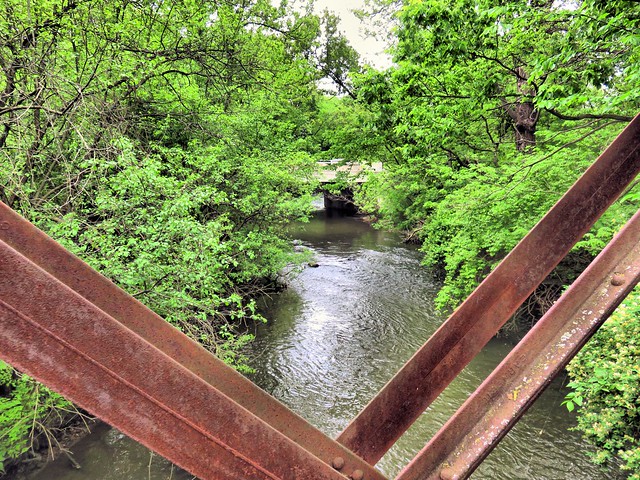
...the flowers...
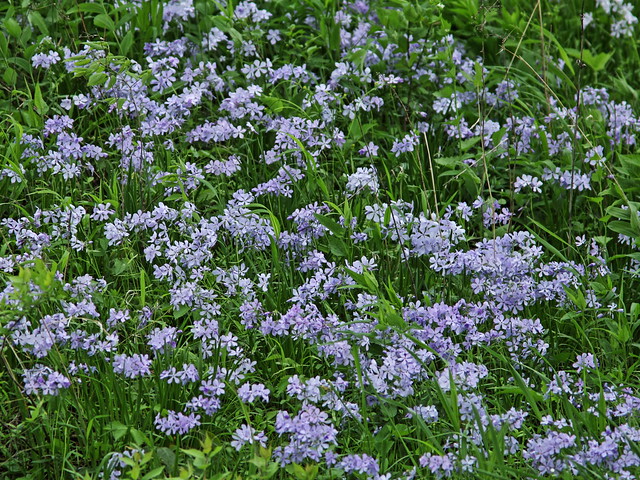
...and the fields:
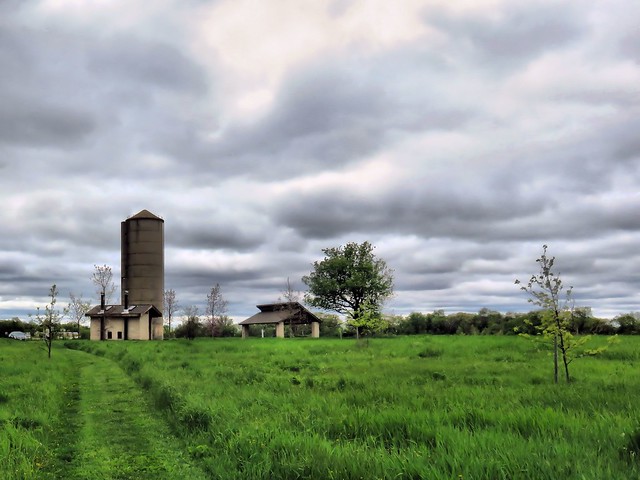
= = = = = = = = = = = = = = =
Linking to Misty's CAMERA CRITTERS,
Linking to Eileen's SATURDAY'S CRITTERS,
Linking to GOOD FENCES by Tex (Theresa).
Linking to SKYWATCH FRIDAY by Yogi, Sylvia and Sandy
Linking to WEEKEND REFLECTIONS by James
Linking to BirdD'Pot by Anni
Linking to Wild Bird Wednesday by Stewart
Linking to I Heart Macro by Laura
________________________________________________
Please visit the links to all these memes to see some excellent photos on display
________________________________________________
































































